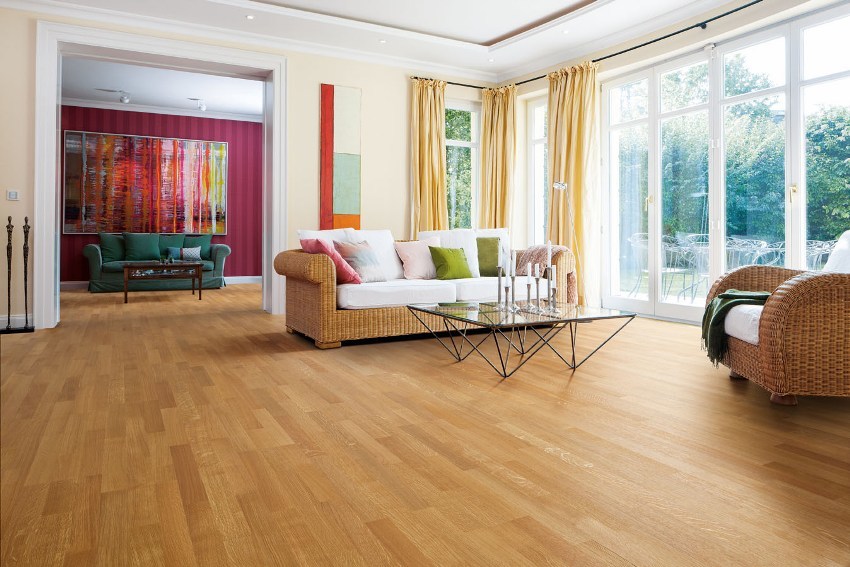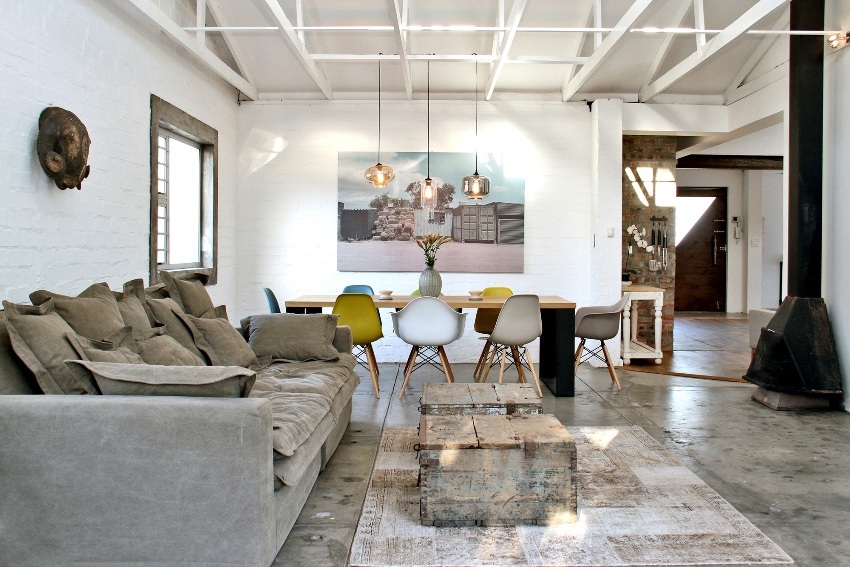Contents
- 1 Types of waterproofing and methods of its creation
- 2 Techniques for applying a waterproofing layer
- 3 Waterproofing with a wet floor screed
Each master will confirm that when building a new house or overhauling it is necessary to lay waterproofing. It reliably retains the main overlap and protects the decorative layer from moisture and fungus. If there is a flood, then if there is a qualitative protection it will be possible not to be afraid to pour the neighbors from below. Therefore, when designing and repairing it is necessary to know how to make the floor waterproofing in an apartment.
Types of waterproofing and methods of its creation
Before you can accurately determine the method of waterproofing, it is necessary to take into account the factors: type of working base, purpose of the room, operating conditions of .
Currently, manufacturers of building materials offer the consumer a wide range of materials. The choice of material and method should be based on how the room will be used, its location.
It is also possible to apply materials to the work surface in several ways:
- Plastering, pasting, painting;
- Penetrating;
- Membrane, roll, film;
- Powder;
- Plaster.
The most famous and easiest to use is a roll-on waterproofing for the floor. All construction materials for it are made of fabric or cardboard, which are pre-treated with a mixture of bitumen. The top layer is basalt crumb.
- The membrane membrane material fulfills two important functions at the same time: hydro and thermal protection. The most commonly used self-adhesive material, this greatly simplifies and speeds up the work process.

Hydrogenating rolls corroded on the floor.
- Film waterproofing. These are all kinds of films, in the composition of which there is polyethylene, polypropylene. It is often used as a base for a floor made of wood.
- Mastic. The composition of materials include bitumen, glass, liquid rubber, resin, polymers. They reliably protect the floor from any exposure to moisture. This is especially important when the work is planned on the bathroom floor. The peculiarity of the composition of the mastic is a plasticizer, because of it the film slowly spreads throughout the floor, penetrating and filling all the holes.
Mastic for waterproofing the floor is of several types:
- Bituminous;
- Polymer;
- Bitumen-polymer;
- Mineral.

So it looks like mastic used for waterproofing the floor.
- Liquid waterproofing. It's paint, lacquer, viscous compounds. Their peculiarity is that they form a water-repellent film on the entire working surface. Actively used for working with concrete and wooden floors.

This is how the composition of the liquid waterproofing
- Powdered appears on the floor. It consists of cement, plasticizers, glue. Very relevant for waterproofing under the warm floor.
Techniques for applying the waterproofing layer
Before working with the floor, it is necessary to clean the work surface: remove all unnecessary, garbage if necessary to dry.

Liquid waterproofing for flooring is only relevant for solid bases. To implement its cast version, it is necessary:
- Dilute the heated waterproofing compound over the floor;
- Cut it using a spatula.
If the composition does not require heating, the composition is simply poured over the floor. In any case, you need to make several layers.
The layer of liquid waterproofing can reach up to 15 cm in height due to its multilayeredness. Therefore, this should be taken into account when designing the work.
There is also a method of applying liquid waterproofing by impregnation. Then the composition is sprayed or applied with a brush.
The essence of coating and painting insulation in the creation of waterproof film, the thickness of which should not be more than 3 millimeters. For its application, brushes or rollers are used.
In such waterproofing compounds often add impurities that protect the floor from the formation of mold, and also have anti-corrosion properties. However, they need updating every 4-5 years.
Separately it is necessary to say about the waterproofing of waterproofing. It is produced in three ways:
- Spreading;
- Application;
- Fusing.
Lay the working material on the cleared space under the floor base. It can be fixed in any way, glued on or simply left to lie.
The fusion procedure is carried out using burners operating on gas. At the same time, fire safety measures should be observed. The gluing of the material is done with the help of glue and special mastic. And there are materials on which there is already a layer of glue.
Waterproofing with a wet floor screed
When a wet floor screed is produced, it is necessary to take care of the waterproofing layer. It performs two functions: it protects against moisture during the exploitation of the floors, and will save the neighbors from the bottom of the flood.
Concrete slabs that form ceiling slabs, no matter how massive and sturdy they look, pass moisture through micro cracks and seams. Therefore, if you do not create a protection against moisture, all water in the process of screed, accompanied by "wet" work, will go down and ruin the appearance of the ceiling of the neighbor.
To make a waterproofing before the wet floor screed, it is necessary:
- To clear the floor of dust, carefully sweep everything;
- Priming the floor, wait for the primer to dry;
- Detect cracks and seams, and seal them with a sand-cement mortar of a stiff density, it should not spread too much;
To ensure that the mortar is bonded well, all cracks need to be expanded to 1-1.5 cm.
- When the crevices are embedded and the grout is dried, cementitious waterproofing should be used. It must be applied evenly on the floor, for this you can use a trowel;
- After this, apply mastic. It is recommended to make 2-4 layers;
Mastic dries in 6 hours. If you apply the next layer after this time, it will not mesh. Therefore, you need to repeat layers after 3-4 hours.
- When the layers of mastic are dry, you can proceed to the wet floor screed.
This method is suitable for "dry" rooms - living room, bedroom. In the bathroom, however, it is recommended to supplement the method with roll-welded bituminous layers, which are mounted using burners.


